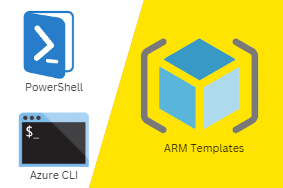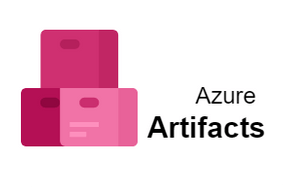Google Cloud Platform offers a variety of cloud computing services to help developers and businesses build and maintain their applications more efficiently, from infrastructure as a service (IaaS) to data storage and management services. The suite of Google Cloud Platform products—Cloud Storage, BigQuery, Compute Engine, App Engine, Cloud Dataflow, and others—comprise the Google Cloud Platform suite. In this article we’ll give you an overview of the full suite of Google Cloud Services available for developers and enterprises who want to leverage them in their own applications or business operations.
Compute Engine
This service is a competitor to Amazon Web Services. When you create an instance in Compute Engine, you can customize it with more than 25 virtual machine configurations. However, unlike AWS’s instances, there are no instance families that each include certain features (such as memory or disk storage). As such, instance sizing may be somewhat more complicated—although Compute Engine does provide an Instance Type Help page for learning about these different options. Like other services in Google Cloud Platform, Compute Engine charges based on usage; your bill increases based on how much CPU time and bandwidth your application consumes. It also has a free tier, which provides 500 free hours per month at up to 600 seconds per hour of usage. Currently, only 12 countries are supported for billing; if you want hosting from another location outside those regions, you will have to pay extra fees.
Machine Learning
Google uses AI and machine learning to make sense of all that data—and give you valuable insights. It’s also used to power apps, like Vision API, which lets you detect specific objects in images or videos. Machine learning is at work behind-the-scenes in a lot of services, such as Speech API and Vision API. These machine learning APIs make it easy for developers to add cloud-based artificial intelligence capabilities into their own apps. Even if you don’t need a sophisticated image analysis system, it’s worth checking out some sample code on GitHub so you can learn how they’re doing it—and maybe even use some yourself in future projects. For example, have you ever wanted to check if someone blinked when a photo was taken? You could try it with an app written in Python. Read more about how one developer integrated Google’s visual recognition capabilities into his app with our step-by-step tutorial guide. If speech recognition is your interest (maybe you want to build an Alexa skill), check out Talk To Books, developed by Thomas Covey — founder of Covey Labs and former technical lead for web search at Amazon — as well as InversifyJS, a plugin enabling Alexa Skills Kit functionality via serverless architectures!
BigQuery
This cloud service analyzes large datasets. It’s part of a suite of tools (along with DataFlow and Dataproc) that helps customers manage, transport, transform and store data. BigQuery is one of a number of services that lets businesses analyze and manipulate petabytes-worth of data without disrupting existing applications. And it’s easy to use: The serverless model means you don’t have to provision or manage infrastructure. Instead, you simply pay for what you use. Click here for more information .
Cloud Natural Language API
The Natural Language API allows developers to understand their text with a variety of powerful classifiers and easily build applications that can automate human tasks. It provides text analysis, structure detection, entity recognition, sentiment analysis, entity extraction and more without requiring any pre-processing or manual labeling. With just a few lines of code, you can use it to analyze your email inbox for emails you need to respond to or your website’s visitor comments for sentiments you need to address. Learn more about the Natural Language API in our overview.
App Engine
This is Google’s Platform as a Service (PaaS). Its claim to fame is that it has auto-scaling and allows for web app development via custom APIs. It’s widely used by some big players in industries like travel, gaming, and healthcare. How does it work? You write an application using one of its SDKs—languages include Java, PHP, Go, Python 2.7 or 3.4+, and Node.js—then you deploy your codebase to their servers for hosting. When your app grows popular (in terms of usage or volume), App Engine will automatically add extra resources to meet your demand.
Firebase
All code written in your app can be kept private and secured on Firebase, or you can host it publically. Additionally, while you build, your app remains operational even if your internet connection drops (to avoid getting stuck with a bad deploy). Everything is automatically replicated across data centers as well. Firebase is also scalable for any size business and offers analytics to track user behavior and monitor apps in real time. With Firebase you don’t have to worry about scaling because they handle all of that for you. They even have built-in migration tools which means that updating between platform versions will always work seamlessly. You just have to log into your account, select what needs updating and press migrate—it really is that simple!
Stackdriver
Measurements and logs from all your cloud resources are collected in one place. Reviewing and troubleshooting is easier when you can track down problems across all your services from a single dashboard. Get more from monitoring with Stackdriver, which alerts you to common issues like low storage or pending migrations so you can avoid them altogether. With support for every major public cloud provider and hundreds of third-party apps, Stackdriver integrates everything into one unified view.
Dataflow
As part of its Google Cloud Platform, also known as GCP, a division of Alphabet Inc., Google offers Dataflow. It’s a managed service that provides on-demand processing and storage for big data applications. The system can ingest data from cloud sources, move it to a data warehouse or database, perform processing on it and then move it to various GCP destinations for further use or analysis. In many ways, Dataflow is similar to Apache Kafka (see below), but instead runs in public cloud infrastructure rather than on-premises hardware. It can run in any public cloud provider’s environment and supports popular big data frameworks such as Spark and Hadoop.
Pub/Sub
In data storage, pub/sub (publish/subscribe) is a publish-subscribe model for data distribution. It is typically used for decoupling senders and receivers in a loosely coupled asynchronous communication system, where senders (publishers) do not program the messages to be sent directly to specific receivers (subscribers), but instead encode messages into publishing protocols, such as message queues. Recipients (subscribers) will then receive all published messages that are of interest without requiring further requests. Messages can be received by multiple subscribers and may include receipts or acknowledgements. Pub/Sub abstracts message routing from application logic and includes both point-to-point messaging between applications as well as broadcasting messages to groups.
Container Engine (Kubernetes)
Container Engine is a fully-managed platform for running Docker containers at scale. You can build and deploy containerized applications easily using Container Engine’s web UI or gcloud command-line tool. It’s designed to be extensible so you can plug in your own custom controller logic, via plugins such as Node Controller or MySQL Controller. Once your cluster is up and running, you can even run kubectl, a command-line interface for Kubernetes, on Container Engine itself. Benefits: By providing high availability through multi-zone deployment options, load balancing, service autoscaling and application health monitoring built into GKE. This makes it perfect for horizontal scaling out big data workloads.
Drawbacks: There are some limitations to consider when using GKE: each region has specific infrastructure requirements such as VM types that are supported; instance termination requires manual intervention; additional costs apply if requiring SSL support. – Gary Russell Stobie
Vision APIs
Recognize text, faces, objects, scenes and landmarks. Build apps that can automatically identify images or live video in real time. Available for Android and iOS. DeepMind: Use TensorFlow to develop AIs with multiple layers. Create reinforcement learning models that enable complex behaviors without programming them from scratch. Support for any framework or language that runs on Linux servers. IoT SDKs: Access a variety of cloud services (analytics, storage and messaging) directly from your device using our SDKs for Android or iOS devices; no connection to Wi-Fi required.
YouTube APIs
The YouTube API is available for use to anyone that has a YouTube account. To use it, you’ll need to go through a simple registration process and obtain authorization keys that allow your application to access data from YouTube. The API allows you to request resources or information on channels or videos from YouTube; search for content; retrieve favorites, playlists, uploads and more. It also gives you access to their API library which contains methods for updating videos in your channel with captions and automatic subtitles using machine learning technology. Currently, there are five different levels of API support: standard API access; non-brand partnerships; limited-feature access for small businesses (like an individual wanting to start up a business on YouTube); non-profit organizations and educational institutions; non-commercial public video libraries.



0 Comments